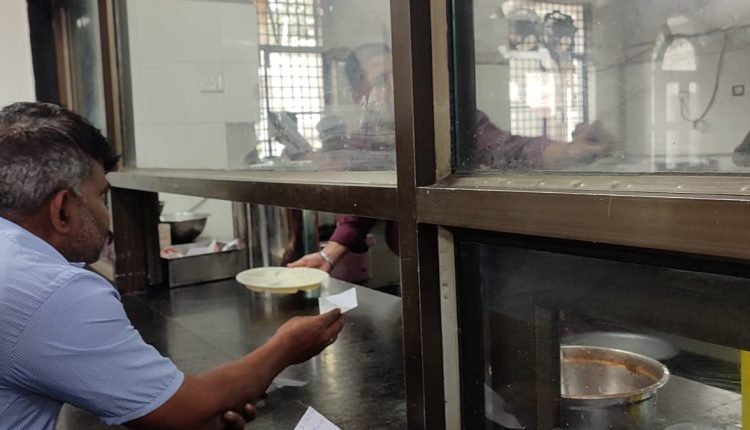Single-use plastic spoons were used in the Delhi Assembly as recently as the budget session, despite the ban imposed on these items.
| Photo Credit: SPECIAL ARRANGEMENT
Despite the ban on several single-use plastic (SUP) products imposed in the city last year, such cups and spoons were found in the Delhi Assembly as recently as the budget session and at several vends across the capital.
A juice vendor about 50 metres from the Delhi Secretariat — which houses the offices of the Chief Minister, other Ministers and top bureaucrats — was also seen using SUP cups.
Over the past 10 months, the Delhi government has banned plastic products twice. While 19 SUP items, including spoons and cups, were prohibited on July 1, 2022, a ban on plastic bags thinner than 120 microns came into force in January this year. However, many of these prohibited items are still used openly across the Capital.
Many shopkeepers in four areas that Today News 24 visited — Kotla Mubarakpur in south Delhi, a marketplace near Vallabhbhai Patel Chest Institute (VPCI) in north Delhi, and Sadar Bazar and ITO in central Delhi — said there is little incentive in avoiding SUP products as the alternatives are twice as expensive and the authorities hardly ever carry out inspections against the banned items.
Going back to plastic
Anwar, a roadside juice seller near VPCI, said he had switched to paper cups and straws when the ban came into force last July. However, as these are expensive, he eventually went back to plastic.
“There are no inspections right now. Plastic bags are banned too, but you will find them in every shop here. Big companies are still manufacturing them,” he said.
Sharan, 44, who sells cold beverages near ITO, used paper cups for some time. Now, his cart is also filled with stacks of plastic cups. “Even people did not prefer thin paper cups as they got soggy very easily,” he added.
The authorities initially used to come twice a day for inspection, he said, but that too stopped soon. “The person who supplies plastic items also said he had an understanding with officials and there won’t be any shortage of stock.”
In the Delhi Assembly, during the budget session, plastic cups and spoons were also given to be used in a room for journalists.
Asked for a comment on the use of banned plastic items across the city, a Delhi government spokesperson did not respond.
When reached out, Assembly Speaker Ram Niwas Goel said that if such items were being used inside the House premises, he will look into it.
Implementation lacking
Suneel Pandey, director, environment and waste management division at The Energy and Resources Institute (TERI), said unchecked manufacturing of plastic items and lax implementation of the ban are responsible for the resurgence of SUP products.
“At times, inspections take place at manufacturing plants, but things return to business as usual after that. There is also a high demand from consumers for these prohibited items as the alternatives are expensive. Till the time there is consumer demand, the ban won’t be successful,” he added.
Mr. Pandey said one solution could be for the government to hand-hold manufacturers during the transition, accompanied by strict vigilance to ban manufacturing of such items. “Though subsiding the alternatives would make them cheaper and more appealing to consumers, the government would want market forces to make that happen [prices to go down with increase in production of alternatives].”
‘Unorganised units’
When contacted, Deepak Ballani, director-general of All India Plastic Manufacturers Association (AIPMA), said its members and other organised units are not manufacturing the banned plastic items. “There is a possibility that unorganised units may be manufacturing them.”
He added that most manufacturers have transitioned to other plastic products. “For example, if they used to manufacture plastic bags of less than 120 microns, now they have retrofitted their machines to manufacture bags which are above 120 microns.”


